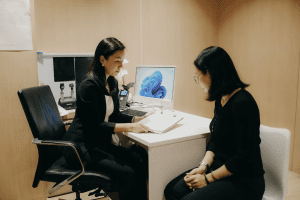Lung Cancer Radiation Therapy: What to Expect
Radiation therapy has become a cornerstone of lung cancer care in Singapore, offering precise tumor targeting with the potential for improved outcomes and quality of life. If you or a loved one are considering this treatment, understanding what to expect before, during, and after therapy is essential. Here’s an overview of how lung cancer radiation works, what the patient journey involves, potential side effects, and supportive tips for managing this important stage in treatment.
Understanding Lung Cancer Radiation Therapy
Lung cancer radiation therapy uses high-energy beams—delivered externally or, less commonly, internally—to destroy cancer cells or shrink tumors. In Singapore, radiotherapy is frequently used for patients who are not surgical candidates, have localized but inoperable tumors, or require local control in advanced stages. Modern technology, including stereotactic ablative radiotherapy (SABR) and image-guided therapy, allows for highly targeted treatment, reducing harm to healthy tissue.
Before Treatment: Consultations and Planning
Your journey begins with a consultation with a radiation oncologist in a multidisciplinary lung cancer team. The doctor will review your medical history and explain the benefits and risks of radiation in detail. You’ll then have planning scans, such as CT, PET/CT, or MRI, to pinpoint the tumor’s exact location and shape. Immobilization devices may be used during this process to ensure safe, accurate delivery of radiation. The care team will create a personalized plan, and you’ll be briefed on how the therapy will be carried out—usually over several sessions scheduled daily for a period of one to six weeks, depending on your condition.
During Treatment: What Happens in the Clinic
Each session is painless and typically lasts less than 30 minutes, though you should arrive early and allow some waiting time. The radiation therapy team will guide you to remain as still as possible for precision. Markings may be placed on your skin to help align the beams correctly at each visit. Communication with the care team is encouraged throughout the process—ask about how you’re feeling, any symptoms, or questions about side effects.
Side Effects and How to Manage Them
Like all cancer therapies, lung cancer radiation can cause side effects—many of which are temporary and manageable:
- Fatigue and general weakness are common; listen to your body and rest as needed.
- Skin changes may include redness, dryness, or itchiness at the site of treatment.
- Difficulty swallowing, sore throat, or mild chest discomfort can occur when the esophagus is in the treatment area.
- Shortness of breath, coughing, or chest tightness may develop, and it’s important to inform your doctor of any new or worsening symptoms.
Less common long-term effects include lung scarring (fibrosis), changes in breathing capacity, and, rarely, heart or bone effects, especially if treatment is close to these organs. Most side effects recede after the completion of therapy, and your healthcare team will support you with symptom relief and rehabilitation as needed.
Tips for a Smoother Experience
- Build a support network of family and friends for emotional reassurance throughout treatment.
- Eat nutritious meals to maintain strength and help recovery; consult a dietitian if you face appetite or swallowing challenges.
- Follow all care instructions, and attend regular check-ups to monitor your response to therapy.
- Allow yourself time to rest, and raise concerns about symptoms or emotions promptly with your care team.
Lung Cancer Care in Singapore
Singapore’s cancer clinics provide world-class lung cancer treatment, incorporating state-of-the-art radiotherapy technology, a multidisciplinary approach, and ongoing research to offer personalized, innovative care. Teams work closely with you, guiding decisions and supporting well-being at every stage.
Conclusion
Lung cancer radiation therapy in Singapore offers hope for disease management and improved quality of life. By understanding what to expect and communicating actively with your care team, you can confidently navigate the experience, minimize discomfort, and focus on recovery. The journey may present challenges, but with comprehensive care and support, patients and families can face treatment with resilience and optimism.
Disclaimer: The content for this article is for informational purposes only and is not a substitute for professional medical advice, diagnosis, or treatment. Always consult your oncologist with any questions regarding a medical condition. Do not disregard medical advice or delay seeking it based on information from this site.

